Solange Ashby
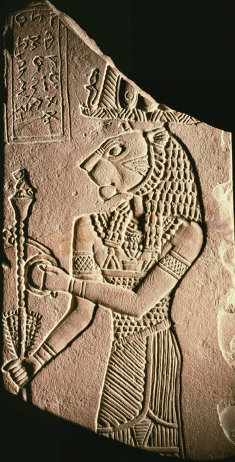
Kush (Sudan) 2300 BCE—300 CE
Nok (Nigeria) 1500 BCE—500 CE
Axum (Ethiopia) first century BCE—700 CE
Early history contains many examples of technological advancements made by African peoples, including engraving (fig. 1), writing (figs. 2 and 3), animal husbandry, and the development of agriculture, ceramic technology, and metallurgy. These and developments in urban planning, architecture, woodworking, and glass bead technology are noteworthy examples of technology that were developed into unique forms on the African continent, not to mention the elaboration of music, dance, and hair braiding, which was unknown elsewhere.
Writing
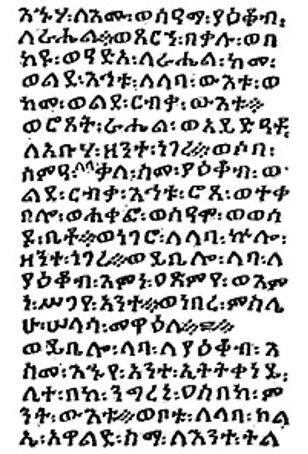
Two vastly different systems of writing, hieroglyphs and cuneiform, appeared in Egypt and Sumer, respectively, around 3200 BCE.[1] The earliest alphabet developed from hieroglyphs (proto-Sinaitic, which evolved into Phoenician), which is the ancestor of most forms of writing currently in use.[2] Egyptian hieroglyphs were developed to tally and record grain donations to temples and label funerary offerings that were buried with the earliest kings. In the second century BCE, Meroitic scholars developed two scripts, a hieroglyphic script that was derived from the Egyptian hieroglyphic repertoire, and a cursive (alphasyllabary) based on the Demotic script (fig. 1). Alphasyllabaries are scripts in which a consonant and a vowel are indicated together by one character.
In the case of the Meroitic script, the vowel is always “a” unless otherwise indicated. In Ethiopic, a base consonant is modified into seven different forms to indicate which vowel follows the consonant. Ge’ez, the Ethiopic script invented in the fourth century CE (fig. 2), was also an alphasyllabary. Its consonants were based on the Old South Arabian script, which was modified to indicate vowels.
The Old Nubian script, invented around the fifth century CE (fig. 3), used the Greek alphabet with the addition of Egyptian Coptic and Meroitic letters for sounds that were not present in the Greek language. These are just a few of the numerous scripts invented in Africa.
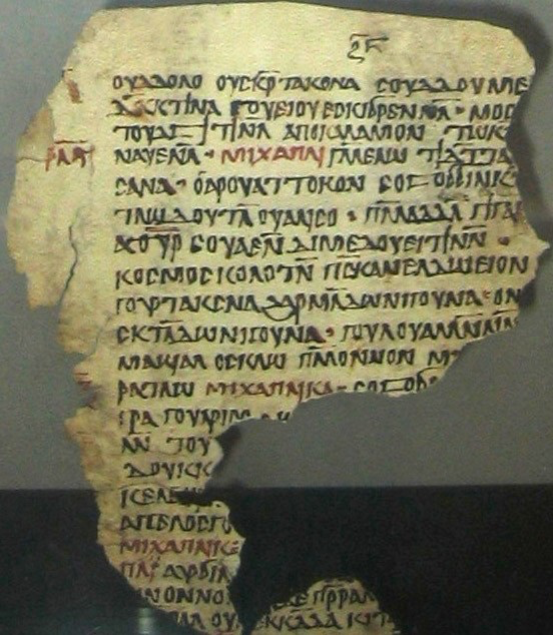
Agriculture
The invention of agriculture was not unique to the Fertile Crescent. In fact, the independent creation of indigenous agricultural practices occurred in as many as twelve areas of the world. In Africa, for instance, availability of wild grains in the Sahara was greatly enhanced by the dramatic increase in rainfall and the northward movement of seasonal rains during the Holocene Wet Period (9500–5000 BCE). Climate change prompted an agricultural revolution in Africa, which was host to the development of crop cultivation in four separate regions.[3] The West African Ounjoungou culture of Niger-Congo speaking peoples began harvesting the wild grain fonio as early as 9500 BCE, which eventually led to cultivation of this grain by 8000 BCE. Similarly, Nilo-Saharan speaking people in East Africa began to harvest sorghum as early as 8500 BCE and then began cultivating it by 7000 BCE. In the period from 7000–3500 BCE, melons, and gourds such as calabashes were added to the agricultural repertoire.
Ceramics
Pottery is one of the oldest human inventions. Neolithic ceramic remains have been found in many cultures around the world.[4] Two independent types of ceramic technology that were used to boil grains for human consumption were developed in different parts of Africa: in West Africa the Ounjougou culture began producing ceramics around 9500 BCE[5], and in East Africa, the North Sudanic Nilo-Saharan people began making their own pottery by 8500 BCE.[6] The late Kushite kingdom of Meroe (descendants of the Nilo-Saharan speaking population) produced master potters who created vessels of unrivaled beauty for use in the domestic, ritual, and funerary spheres, where the tradition of pouring libation in drink offering to gods or spirits (found in many African cultures) was of paramount importance.
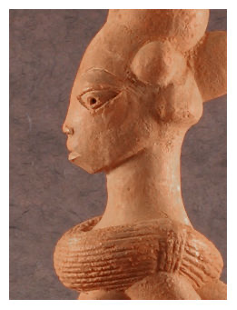
Many scholars attribute the invention of ceramic technology (fig. 4) in Africa to women, who were primarily responsible for food preparation. This may explain why ceramic pots in many cultures are decorated to represent female bodies.[7] Both independent inventions of ceramic technology in Africa predate the use of ceramics in the Middle East (6500 BCE) by thousands of years.
Powerful life-sized terracotta figures—some dating back as early as 500 BCE—were discovered in Nok, Ife, and the Chad basin (See Figure 5).[8] Scholars have suggested that the striking terracotta figures of Middle Africa may have been created by women for use in their society’s ritual sphere, to be set up in shrines or as funerary statues to be included in burials.[9]
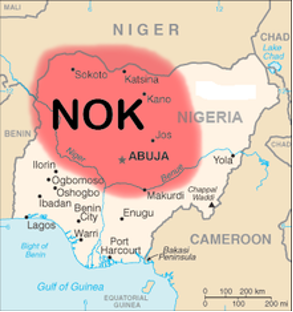
Nok artisans were also iron workers and the terracotta sculptures were often found in proximity to smelting sites. Perhaps this is a case of male-female complementarity: women formed the amazing terracotta figures, while men produced stunning iron artifacts. The early excavator of these objects “postulated the terracottas were objects of worship to aid blacksmithing and smelting.”[10]
In looking more closely at technology, the role of women in its history must be acknowledged more emphatically. Pottery production is ‘among the most longstanding of human technical achievements’ although little has been written about the history of its development and the organization of its production. A history of pottery production in Africa or in other parts of the world is a history in which women have played a central role.[11]
Animal Husbandry
The earliest domestication of cattle took place in Africa. Wild cattle, indigenous to the Mediterranean steppe area in the northern Sahara, moved southward during the Holocene period (9500 BCE), where the North Sudanic peoples of East Africa quickly shifted from cattle tending to cattle domestication. This necessitated herding cattle to the Nile during the long dry season before year-round surface water became available throughout the Sahara sometime after 8000 BCE.[12] Donkeys were first domesticated by two groups of early Cushitic-speaking people in the Red Sea Hills (east of the Nile), and the Ethiopian highlands in the sixth millennium BCE. Here I use the term Cushite to denote an Afro-Asiatic language group spoken in the highlands of Ethiopia, not the Kushite people of Nubia in Sudan and Egypt. By the fourth millennium the use of the donkey as a beast of burden had spread to the Ancient Near East.[13]
Weaving
Figure 6. Ancient Egyptian Spindle Whorl. National Museums Liverpool.
Archaeological evidence of spindle whorls of baked clay confirms the invention of weaving by Africans living along the Middle Nile Valley circa 5000 BCE as a result of the domestication of cotton. The development of cotton weaving technology by Nilo-Saharan speakers along the Nile occurred earlier than anywhere else in the world except India, where this technology developed around the same period.[14] As early as the fourth millennium BCE, the invention of a broadloom allowed for the weaving of raffia palm fibers into fabric that would later become a commodity of long-distance trade in West and Central Africa.[15]
Metallurgy
In at least two different regions of Africa, the technology to mine, smelt, and work copper was practiced. Copper-working technology was introduced into Egypt from the eastern Mediterranean in the second half of the fourth millennium but was also developed independently in the Aïr Mountains of northern Niger by around 2500 BCE.
Anatolia (modern Turkey) is often touted as the site where iron-working technology originated, around 1500 BCE, diffusing from there into Egypt, Europe, and the Middle East. However, new archaeological discoveries seem to indicate the beginnings of iron production in central Africa (today’s Central African Republic) as early as 2000–1800 BCE.[16] Furthermore, in the last millennium BCE, African iron smiths developed smelting furnaces capable of producing temperatures high enough to produce steel directly during the smelting process. This technology was not used in China until 1100 CE, and it was not until the mid-nineteenth century when this technology, which would come to be known as the Bessemer process, began to be employed in Europe.[17] North and South American slave societies benefited from the technical knowledge of the Africans they enslaved. Ornate iron work can be seen in the antebellum homes of the southern United States. Perhaps as archaeological research in Africa develops, the continent will be found to be the origin of many other technologies.
Conclusion
Both the development of agriculture and writing allowed complex civilizations to emerge by increasing food resources, which in turn allowed for population growth and the founding of cities. The development of a centralized state to collect and protect the food wealth created by agriculture, increased the need for a bureaucracy to manage it. Writing allowed rulers to calculate grain production and record temple donations, distribute food rations to temple employees, and to collect and record taxes. The development of agriculture and writing went hand in hand with development of complex societies in some areas of Africa, while other African regions saw the creation of complex societies that eschewed writing and practiced pastoralism. The earliest Kushite state, Kerma (2600–1600 BCE), is an example of a non-literate, highly complex ancient African state.
To date, few studies on the development of technology in Africa have examined the topic through the transformative early achievements of the African people. African societies focused more on technologies relating to economic and social life rather than the development of military technology. Complicating matters further, the vast majority of existing literature has focused on Western technologies that enabled European colonial incursions on the continent. Born of this history is a tendency to attribute the highly esteemed term “civilization” to those socially stratified and militarily dominant societies.
While African societies contributed greatly to technological developments that changed human culture from gatherer-hunters to settled, complex civilizations, the pursuit of technology in the forms of weapons of war—or as a means of economic exploitation—may have been an interest but was not a driving focus of African civilizations. The focus on “technology” is itself inherently Eurocentric when used as a metric to judge the historical development of human civilizations. Christopher Ehret expresses this well:
Those societies designated as “civilizations” are treated as if they were the centers of almost all innovation and of all the really important developments. They tend to be viewed, fallaciously, as culturally more complicated, artistically more accomplished, and technologically more advanced than “noncivilizations.” The fact that many key technological innovations in human history began, and much great art was produced, in other, less stratified, nonurban societies is glossed over. […] We miss the many human accomplishments of lasting importance that originated in other places entirely. How peculiar, anyway, that today, in an era of democratic thinking given to the idea of democracy for all people, we should continue in our history books to esteem so highly societies in which wealth and political power were monopolized by the few.[18]
Endnotes
[1]. Elise V. Macarthur, “The Conception and Development of the Egyptian Writing System,” in Visible Language: Inventions of Writing in the Ancient Middle East and Beyond, ed. Christopher Woods (Chicago: University of Chicago, 2010), 121.
[2]. Joseph Lam, “The Invention and Development of the Alphabet,” in Visible Language: Inventions of Writing in the Ancient Middle East and Beyond, ed. Christopher Woods (Chicago: University of Chicago, 2010), 189–90.
[3]. Christopher Ehret, The Civilizations of Africa: A History to 1800 (Charlottesville: University of Virginia Press, 2016), 96.
[4]. Czech Republic (29,000–25,000 BCE); Jiangxi, China (18,000 BCE); Jōmon, Japan (10,500 BCE); the Russian Far East (14,000 BCE); Africa (9,400 BCE); South America (9,000–7,000 BCE); and the Middle East (7,000–6,000 BCE).
[5]. Ehret, Civilizations of Africa, 57.
[6]. Harriet Hafsaas, Cattle Pastoralists in a Multicultural Setting: The C-Group People in Lower Nubia 2500–1500 BCE (Bergen, Norway: University of Norway, 2006), 77.
[7]. Hafsaas, Cattle Pastoralists in a Multicultural Setting, 76; Ehret, Civilizations of Africa, 57; Randi Haaland, “Emergence of Sedentism: New Ways of Living, New Ways of Symbolizing,” Antiquity 71, no. 272 (1997): 378–79, https://doi.org/10.1017/S0003598X00084982.
[8]. Ehret, Civilizations of Africa, 225.
[9]. Marla C. Berns, “Art, History, and Gender: Women and Clay in West Africa,” African Archaeological Review 11 (1993): 129–48, https://www.jstor.org/stable/25130562.
[10]. Bernard Fagg, Nok Terracottas, 1st ed. (Lagos: Ethnographica for the National Museum, 1977), 23n16.
[11]. Berns, “Women and Clay in West Africa,” 143.
[12]. Ehret, Civilizations of Africa, 72.
[13]. Ehret, Civilizations of Africa, 83.
[14]. Ehret, Civilizations of Africa,75.
[15]. Ehret, Civilizations of Africa, 62.
[16]. Ehret, Civilizations of Africa, 14, 150–1. [Danielle, these two were footnotes, which might be why the numbering was off. I’ve converted them to endnotes and they should be in the correct order.]
[17]. Ehret, Civilizations of Africa, 151.
[18]. Ehret, Civilizations of Africa, 6.

